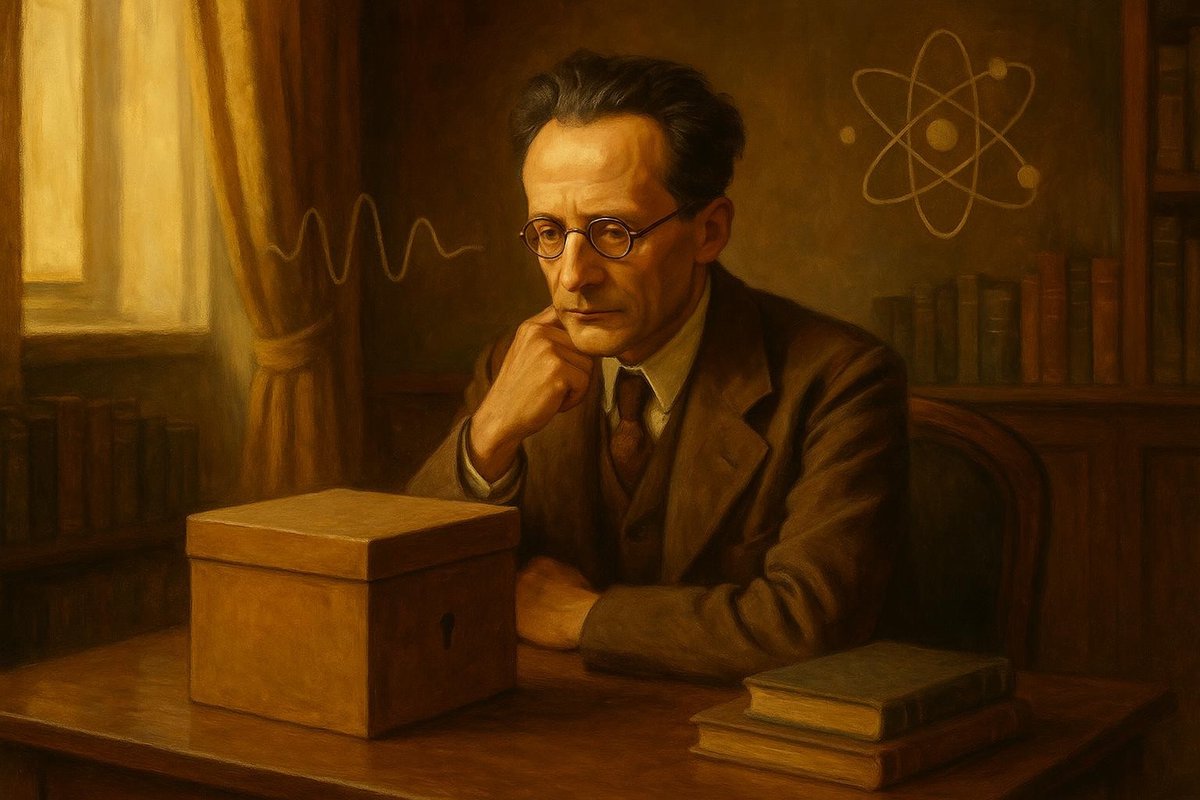
Have you ever wondered how quantum mechanics could redefine our understanding of life and death? Enter Schrödinger’s Cat, a thought experiment that sits at the curious intersection of science and philosophy. Born from the mind of physicist Erwin Schrödinger in the 1930s, this paradoxical feline resides in a quantum world where the boundaries of existence blur, challenging our perception of reality itself.
Hypothesis & Context
Schrödinger’s Cat emerged from a need to illustrate the strangeness of quantum mechanics, particularly superposition. But what exactly is superposition?
- Quantum mechanics suggests particles can exist in multiple states at once.
- Schrödinger used a cat to symbolize this idea — alive and dead simultaneously until observed.
Before this, the classical world seemed orderly, with clear distinctions. Yet, as quantum theory evolved, it suggested a universe teeming with uncertainty. No wonder the scientific community was both intrigued and baffled.
Erwin Schrödinger, inspired by Niels Bohr and Werner Heisenberg’s earlier work, devised this thought experiment in Vienna. It was a time when the cultural landscape was ripe for questioning existing norms, not just in science but in art and philosophy, too.
Setup & Method
Imagine a sealed box. Inside, a cat, a flask of poison, and a radioactive atom. The atom might decay, and if it does, the poison is released, killing the cat. Until the box is opened, is the cat alive or dead or both?
- Place a cat and toxin in a box with a random quantum event trigger.
- Consider the cat’s state as a superposition of alive and dead until observed.
This setup illustrates the paradox of quantum mechanics: observation affects outcome. It begs the question: what is the nature of reality when unobserved?
This experiment echoed through the halls of academia and beyond. In the 20th century, it spurred debates among scientists and philosophers, questioning the role of the observer in the quantum world.
Results & Reactions
The thought experiment didn’t provide a clear result but rather a philosophical conundrum. It forced a reconsideration of what it means to ‘observe’ something in the quantum realm.
- No physical cat was harmed, but the idea sparked discussions on quantum measurement.
- It divided thinkers like Einstein, who famously quipped about the moon’s existence when not looked at.
Schrödinger himself never meant for the cat to be a definitive answer but a way to showcase the absurdity of applying quantum physics to everyday objects. Yet, it resonated deeply, challenging assumptions about reality.
As debates raged, the cat became a cultural icon, influencing everything from literature to art and popular media.
Implications
What do we learn from Schrödinger’s Cat? It’s more than a quirky intellectual exercise; it’s a profound statement about the universe’s uncertainty.
- Challenges traditional views of life and death, demonstrating their fluidity in quantum terms.
- Prompts philosophical inquiries about existence and consciousness.
Intriguingly, it reflects human curiosity’s boundless nature. Many people believe it symbolizes the eternal quest to understand our world, where answers often lead to more questions.
In today’s rapidly advancing world, this thought experiment remains relevant, reminding us that uncertainty is not just a scientific concept but a fundamental aspect of life itself.
As time goes on, Schrödinger’s Cat continues to inspire, encouraging us to ponder our place in the cosmos.
Fuel Someone Else’s Curiosity
If this exploration into quantum uncertainty and the philosophical ponderings of Schrödinger’s Cat intrigued you, share it with someone curious about the mysteries of the universe. Let’s keep the conversation going!

Leave a Reply